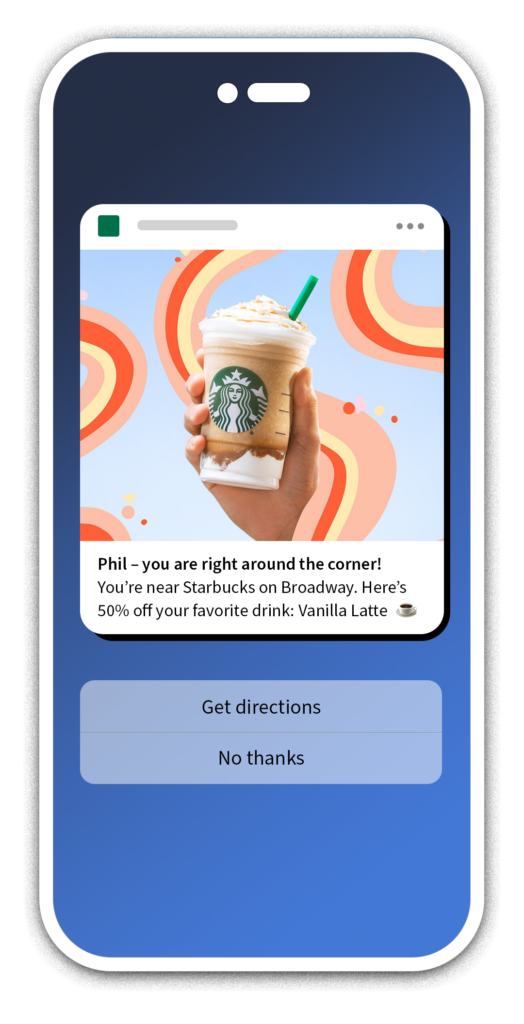Online interactions are increasingly shifting from desktops to mobile phones. That makes it vital for businesses to focus on mobile customer engagement in order to build brand awareness and increase conversions.
How to Think About Mobile Customer Engagement in a Cross Channel World
Mobile users are busy, so it’s important to create a conversational messaging approach that’s easy to interact with. Gen Zers, for instance, rely heavily on a smooth mobile experience and are likely to abandon their cart or leave a bad review if they don’t enjoy the process.
For instance, simplify chatbot experiences that allow for short yes/no responses instead of requiring sentences. You can also streamline other mobile interactions, like survey links, one-tap review options, and integrated tracking updates. And if you do anticipate your customer needing more information, highlight those links so they can find the appropriate details without getting frustrated.
There’s a fine line between staying at the top of your customer’s mind and overdoing it. If you overflex mobile, you run the risk of appearing aggressive and damaging the relationship.
Advantages of Conversations on a Mobile Device
Mobile phones are becoming ubiquitous across the globe; by 2025, studies expect 7.5 billion people to use smartphones. And today in the U.S., nearly 60% of Americans use smartphones as their preferred shopping method.
There are several reasons for the rise in mobile popularity. First, mobile messaging is highly personalized and conversational, making it easy to provide a fantastic user experience. This helps to retain customers and keep them engaged with your brand. Plus, repeat purchases are easier (and less expensive) to achieve than getting new buyers.
Mobile also works best alongside other channels and can integrate into your brand’s app.
Mobile Push Best Practices
Get inspired to take your mobile customer engagement to the next level with these best practices.
Personalize everything: Make recommendations based on previous purchase history or in-app activity to influence future behavior.
Be concise, but compelling: Cut to the chase so users quickly understand the call to action.
Use, but don’t over-use, rich notifications: Incorporate images, audio, and video to increase conversions, but don’t overwhelm your audience with media every single time.
Play with timing: Avoid sending pushes during cultural personal times, like breakfast or dinner. Also segment your audience by time zones so you don’t mistakenly send anything in the middle of the night.

Urgency and time sensitive messages: Create a push notification calendar by starting with urgent messages such as sales, giveaways, and inventory alerts. Then you can add more in appropriate intervals, like abandoned cart reminders.
🤔 Consider emojis: Add an emoji to the subject line or title line of your push notification, which can lead to as much as a 56% higher open rate.

Location tracking for brick and mortar: Geo-fencing in your app sends a notification whenever a user is within a certain radius of your location. Send a promo code to encourage them to stop by.
Respect user preferences: Always respect user preferences and privacy to avoid spamming them and damaging your brand’s reputation.
SMS Best Practices
Texting your audience? Follow these tips.
- Always ask for an opt-in so that you have consent to send marketing materials.
- Skip the vanity URL and make the brand known immediately to avoid appearing as spam in their inbox.
- Provide value to engage subscribers with content like sales notifications, events, or launches.
- Be precise, but don’t sacrifice professionalism. It feels like a challenge, but you need to craft clear copy even when working in tight character count restrictions.
In-App Best Practices
Here’s how to engage users within your brand’s app throughout all stages of the customer journey.
- Improve the user experience to remove frustration and allow them to easily navigate their way through the app.
- Promote time sensitive sales or promotions to boost conversions.
- Improve sign-up with a brief walk-through of the app. Then focus on conversion potential with notifications for a relevant upsell based on previous behavior.

- Support the customer journey with Tooltips. These pop-ups provide additional explanations of specific features that may not be automatically intuitive.
Embedded Experiences
Embedded experiences take personalization to the next level based on each user’s past behavior in the app. You can utilize real-time data to send reminders based on previous views, unread message alerts, or new recommended content.
Ready to engage your customers across all channels?
Get started with MessageGears.





